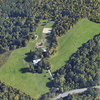VCSD enrollment: ‘Slow, gradual' growth expected over next five years
NEW SCOTLAND — On a night it heard about the possibility of a pre-kindergarten program being added to the district, the Voorheesville School Board was informed that student enrollment is expected to increase by close to 8 percent in the next half-decade.
The board at its April 12 meeting heard a presentation from Joshua Tocci, a planner for the Capital District Regional Planning Commission.
Tocci told board members that Voorheesville’s enrollment had declined over the past 20 years, from 1,311 in 2001-02 to 1,204 in 2020-21, but he estimated the number of students in the district would return to the turn-of-the-millennium numbers, an estimate 1,302 by 2024-25, and 1,300 by the end of the projection period, 2025-26.
Voorheesville would see “slow, gradual” growth over the next five years, said the report prepared by Tocci, as read by board member Tim Kremer during the meeting.
For his five-year projection of the number of students in the district, Tocci used what is called “survival multipliers.”
The first survival multiplier was for grades 1 through 12: Tocci explained if there were 100 first-graders in school this year and 120 in school next year, that would be a survival multiplier of 1.2.
The second survival multiplier measures kindergarten enrollment: Tocci said this multiplier looks at the number of births in the district and then how many students were enrolled in kindergarten five years later. For example, if there were 100 births in the district this year and five years from now 120 students enrolled in school, the kindergarten survival multiplier would be 1.2.
The number of births in the district in the years between 2015 and 2020 were 50, 45, 63, 58, 53, and 54, respectively — the data lags about two years, so 2019 and 2020 are estimates, he said.
But the district has had a very strong kindergarten survival multiplier since 2002, never dropping below 1 — and never below 1.5 for 12 of the 19 years. (2016 through 2020 were estimated because those students hadn’t actually enrolled in school).
“Consistently above one, and that’s actually pretty rare,” Tocci said. “Not a lot of districts get this high. This is actually the highest I’ve seen for any of the districts that we do reports for. So this is a really good sign for growth.”
Housing developments
Voorheesville asked Tocci to look at recent development within the school district and assess how many potential students could be added from the new housing.
To do so, demographic multipliers were used.
“Put simply,” Tocci said, “it takes the average number of people produced by a given housing type.”
Tocci used demographic multipliers from two different sources: Rutgers University and an economic consulting firm.
Econsult Solutions said a single-family home produces .62 children; two- to four-unit housing complexes produce .466 kids per unit; and complexes with five or more units produce .266 children per unit.
Rutgers used the metric that a single-family home produces .58 kids; and multi-family units produce .13 children per unit.
Tocci said that he had spoken to the respective planning departments of the municipalities within the school district — village of Voorheesville and towns of New Scotland and Guilderland — “to kind of get a sense of recently approved housing projects; projects that were currently in the process of being approved; and anything that they saw coming down the pipeline.”
In 2000, there were 2,798 housing units in the school district; by 2010, that number had increased to 3,117; and it’s now estimated that there are 3,255 housing units in the school district, Tocci said during the April 12 meeting.
On new development in the school district, Tocci said there was “one really big project” in the works at Albany County Country Club, in Guilderland.
The project was looking to add 76 single-family units; 134 two-to-four family units; and 48 five-plus family units, he said.
Tocci said the project could potentially bring a lot of families into the school district.
In New Scotland, going back a few years, 280 housing units were approved or in the process of being approved.
The village of Voorheesville had 13 single-family housing units that had come online in the past five years.
Based on the recent and upcoming housing development in the district, Tocci estimated that between 238 (using the Rutgers demographic multipliers) and 305 (using the Econsult demographic multipliers) additional students could enroll in Voorheesville schools over the next 10 years.
“There’s the possibility,” Tocci said, that these students could be added to the district’s enrollment figures — in addition to the projected enrollment he had already offered.
Tocci added the caveat: “This is just kind of an estimate” because, with the student enrollment numbers, “we don’t definitely know that these [housing] units will produce these children.”
He added a second caveat that the number of students entering the district “wouldn’t necessarily be ... immediately, this could be over the next 10 to 15 years as opposed to the next five years.”
Tocci said, in the process of doing the projection, the total number of planned units for the Albany County Country Club project had changed in the span of a week or two.
Tocci also said that the country club housing project had not been approved and was not finalized; what he had were just the latest numbers and there was also the chance that the property could not be rezoned.
But he added, “It seemed like the planner felt positively about the project getting approved, so it’s likely that it’ll go through but we don’t know when it will go through ….”
Pre-kindergarten
Included in this year’s state budget was funding to allow for universal pre-kindergarten in school districts across New York State.
Voorheesville, which doesn’t have pre-K, received about $146,000 for the initiative.
“And I don’t see that funding stream going away,” said Superintendent Frank Macri during the April 12 meeting. “I believe it’s going to continue.”
The difficult part will be how to make a pre-K program happen in Voorheesville, he said.
In the past, Macri said, he’s looked at partnering with outside entities.
Also to be determined is the type OF funding that will be available to cover either full- or half-day pre-K programming.
“Good news is we have the money,” Macri said. “Bad news is we don’t have the spacing right now to be able to do this.”
Macri continued, “But we’re going to find an opportunity and figure out a way to be able to make it work.”
The last time Macri set up a pre-K program, at another district, it took six months to a year to get it right. This time, it’s “a little bit different,” he said, because he’s looking at a three- to four-month window to get the program up and running.
But board member Rachel Gilker questioned whether Voorheesville should be offering pre-K opportunities.
“Is it the role of the school district to offer a pre-K program?” asked Gilker. “The grant is interesting but I think it is something that we should be thinking about as well. I’m not suggesting one way or another, I’m just saying it’s something that people have talked to me about that, while it is a needed service or thing, it is not necessarily something that everyone agrees is [needed].”
While he didn’t have the specific numbers, Kremer, who for two decades directed the New York State School Boards Association, quickly interjected that he thought most school districts had pre-K programs.
Macri said pre-K is not a daycare program; it’s an early literacy program while Kremer added there are benefits for students who need special education.



